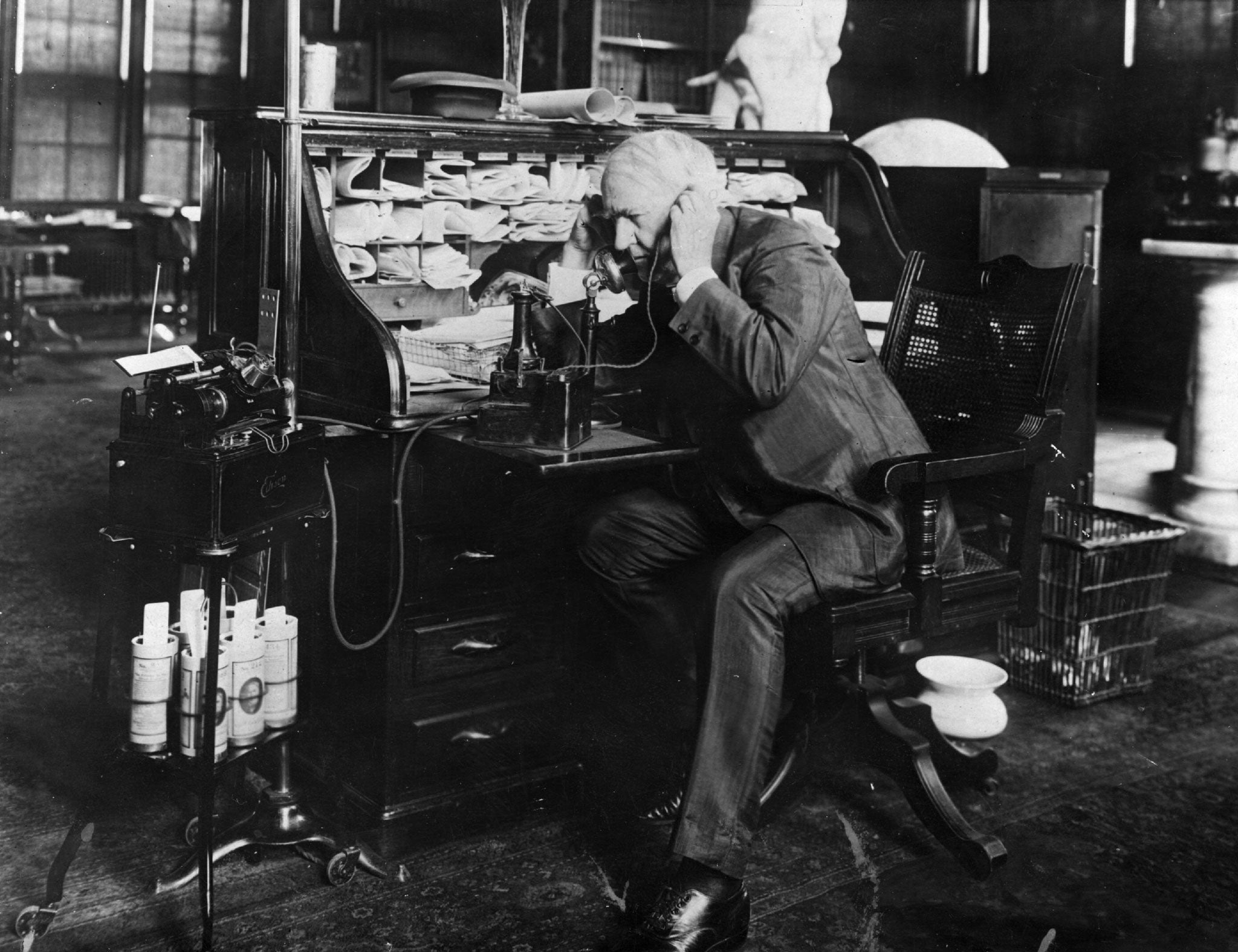Rhodri Marsden's interesting objects: Thomas Edison's Telescribe
The machine designed to record telephone conversations was unveiled 100 years ago today

Your support helps us to tell the story
From reproductive rights to climate change to Big Tech, The Independent is on the ground when the story is developing. Whether it's investigating the financials of Elon Musk's pro-Trump PAC or producing our latest documentary, 'The A Word', which shines a light on the American women fighting for reproductive rights, we know how important it is to parse out the facts from the messaging.
At such a critical moment in US history, we need reporters on the ground. Your donation allows us to keep sending journalists to speak to both sides of the story.
The Independent is trusted by Americans across the entire political spectrum. And unlike many other quality news outlets, we choose not to lock Americans out of our reporting and analysis with paywalls. We believe quality journalism should be available to everyone, paid for by those who can afford it.
Your support makes all the difference.* "It makes the telephone more useful, the phonograph more valuable and both more necessary," said Thomas Edison, with an uncharacteristic lack of foresight. The Telescribe, a machine designed to record telephone conversations, was unveiled 100 years ago today, with praise heaped upon it by journalists who hadn't actually seen it working. "Telescribing will become a custom," predicted The Rotarian, incorrectly.
* Edison had long been convinced that the telephone could only reach its full potential by being twinned with his own invention, the phonograph. Our inability to record conversations for posterity restricted the telephone, he said, to "simple conversational chit-chat", and was thus useless for conducting business. He set about inventing such a machine, and in 1878 produced a prototype for what he called a "carbon telephone" – but it was another 37 years before he proudly announced the Telescribe.
* The truth was that there was widespread suspicion, then as now, about the recording of telephone conversations. In 1900, the Danish inventor Valdemar Poulsen had come up with a machine that recorded calls on huge spools of thin copper wire, but it never worked very well, and the business selling them in the US went bankrupt at around the time that the Telescribe was announced.
* Edison's invention had two telephone receivers, one of which you plugged into the phonograph when a call came in, and a smaller one which you talked through. Edison envisaged that, once completed, the wax cylinders would be replayed and transcribed by a stenographer, before sending paper copies to both parties for confirmation. He regarded the commercial possibilities as "almost unlimited", but in the event only a handful of Telescribes were produced before it was quietly withdrawn from the market.
Join our commenting forum
Join thought-provoking conversations, follow other Independent readers and see their replies
Comments